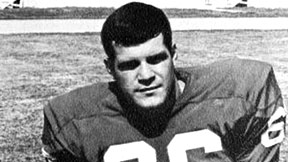Author, Easton, Pa. illustrator create children's book for 100th anniversary of Tulsa Massacre

The story of an attack that went largely untold for nearly a century is finally being shared in a way that all audiences can understand.
The Tulsa Race Massacre is the subject of a new book by Carole Boston Weatherford, an author who has developed a reputation for creating award-winning children's books on African American people and events that hold a place in history.
"For 75 years, the Tulsa Race Massacre was hidden," said Weatherford.
The Tulsa Race Massacre was an attack by a white mob on the all-Black community of Greenwood. It happened on May 31, 1921, and this year marks the 100th anniversary.
"The Tulsa Race Massacre was the worst incidence of racial violence in our nation's history," said Weatherford.
Weatherford has made the difficult subject the focus of her newest children's book "Unspeakable: The Tulsa Race Massacre." The book brings the story to life in a way that children ages 8-12 can understand.
"It's important to me give children the truth," said Weatherford. "And parents can also trust that book authors like myself are professionals and are writing age-appropriate material."
Weatherford is the author of numerous award-winning books. She's written more than 50 children's books, earning her the nickname "The Dean" of non-fiction children's books.
For "Unspeakable," Weatherford worked with an illustrator who has a Pennsylvania connection. That Illustrator, Floyd Cooper, is originally from Tulsa but lives in Easton, Pennsylvania.
"He is known for cinematic illustrations," said Weatherford.
"Unspeakable" is now part of the African American Children's Book Project, which is based in Philadelphia. The project states that its mission is "to promote and preserve children's literature written by or about African Americans." Weatherford has a similar mission for her work.
"I am covering topics that are little-known history or hidden history so to speak," she said.
"Unspeakable" lays out the significance of Greenwood to Black history as a thriving community.
"A one-mile stretch along Greenwood Avenue was known as Black Wall Street. That was the wealthiest black district in the entire nation," said Weatherford.
The attack destroyed the Black Wall Street district and took an enormous toll on lives.
"Leaving 8,000 people homeless and 300 or more people dead," Weatherford said, noting that some mass graves from the massacre still have not been found.
But the book doesn't end with the attack. Weatherford, instead, wanted to end the book with hope for the future. It's something she hopes young readers will carry on.
"Truth is the first step towards reconciliation. So that's why it's important particularly to share these events with children," she said.







